"I convert the energy of my life into dots of the universe"
Japanese artist Yayoi Kusama is a painter, collage artist, sculptor, performance artist and installation artist.
In addition to polka dots, pumpkins have been a source of inspiration from her childhood.
Her dream as a child was to become a painter when she grew up. From the age of 10 she started painting many pictures. Her mother didn't want her to be an artist, she wanted Yayoi to learn manners and marry a husband.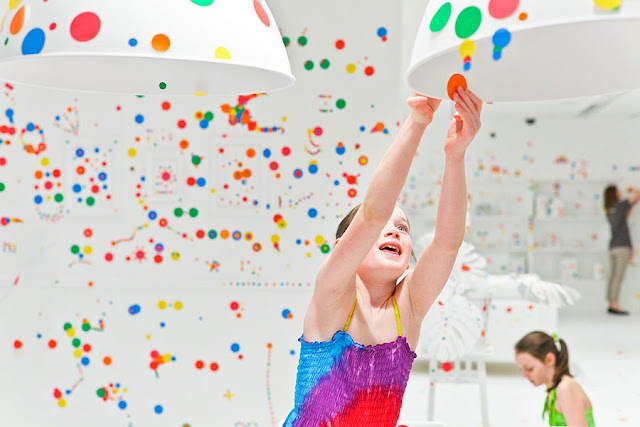
She moved to New York to escape. With a suitcase full of drawings she arrived in New York to pursue her career as an artist. In NYC she devoted herself to her art. She showed her art work next to Andy Warhol and Pop Artists. Eventually she moved back to Japan.
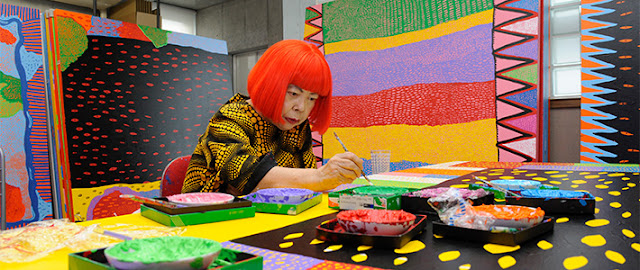
As a child she began to seeing polka dots everywhere she went. Kusama has dealt with mental health challenges since a young age which cause her to have visions or hallucinations (see things that actually aren't there), visions that have inspired much of her work. She says, "I have a flood of ideas in my mind. I just follow my vision."
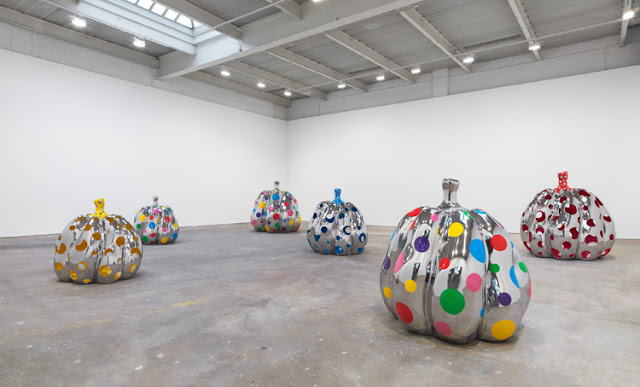
Art is a healing process for her, she describes her work as therapy
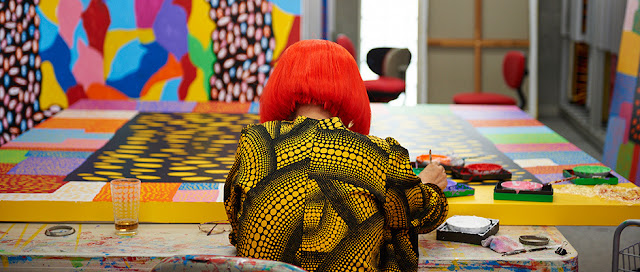
She paints everyday. "My art was made to change people's minds, I hope it can make the world more peaceful."
 Yayoi Kusama has had a successful 65-year-long art career but recently her popularity has skyrocketed and has become a social media sensation.
Yayoi Kusama has had a successful 65-year-long art career but recently her popularity has skyrocketed and has become a social media sensation. Based on museum attendance the 88-year-old “Polka Dot Princess”was named the world’s most popular artist. She hands-down beat out all of her male and female competition.
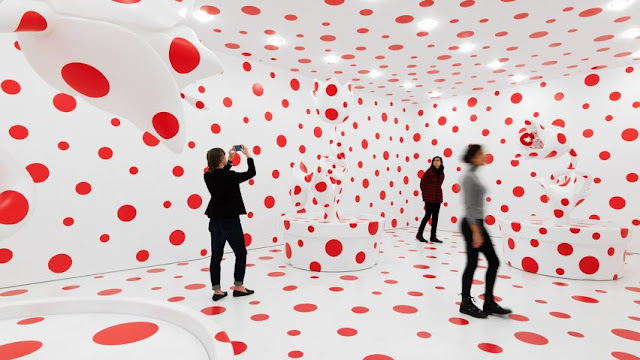
People have been flocking to her Infinity Mirrors exhibit at major art museums across the country. Museum goers wait in long lines for this sold out exhibition.

"More and more, I think about the role of the arts, and as an artist, I think that it's important that I share the love and peace." - Kusama
As you think about your art, What do you want to share in your work?
Has art ever helped you express an idea or emotion when you were feeling a certain way?
As an artist, do you want the viewer to interact with your art?
As an artist, do you want the viewer to interact with your art?
Sources:
*https://www.youtube.com/watch?v=mmFBlE4cg3w&disable_polymer=true
*https://observer.com/2015/04/the-stunning-story-of-the-woman-who-is-the-worlds-most-popular-artist/






































































